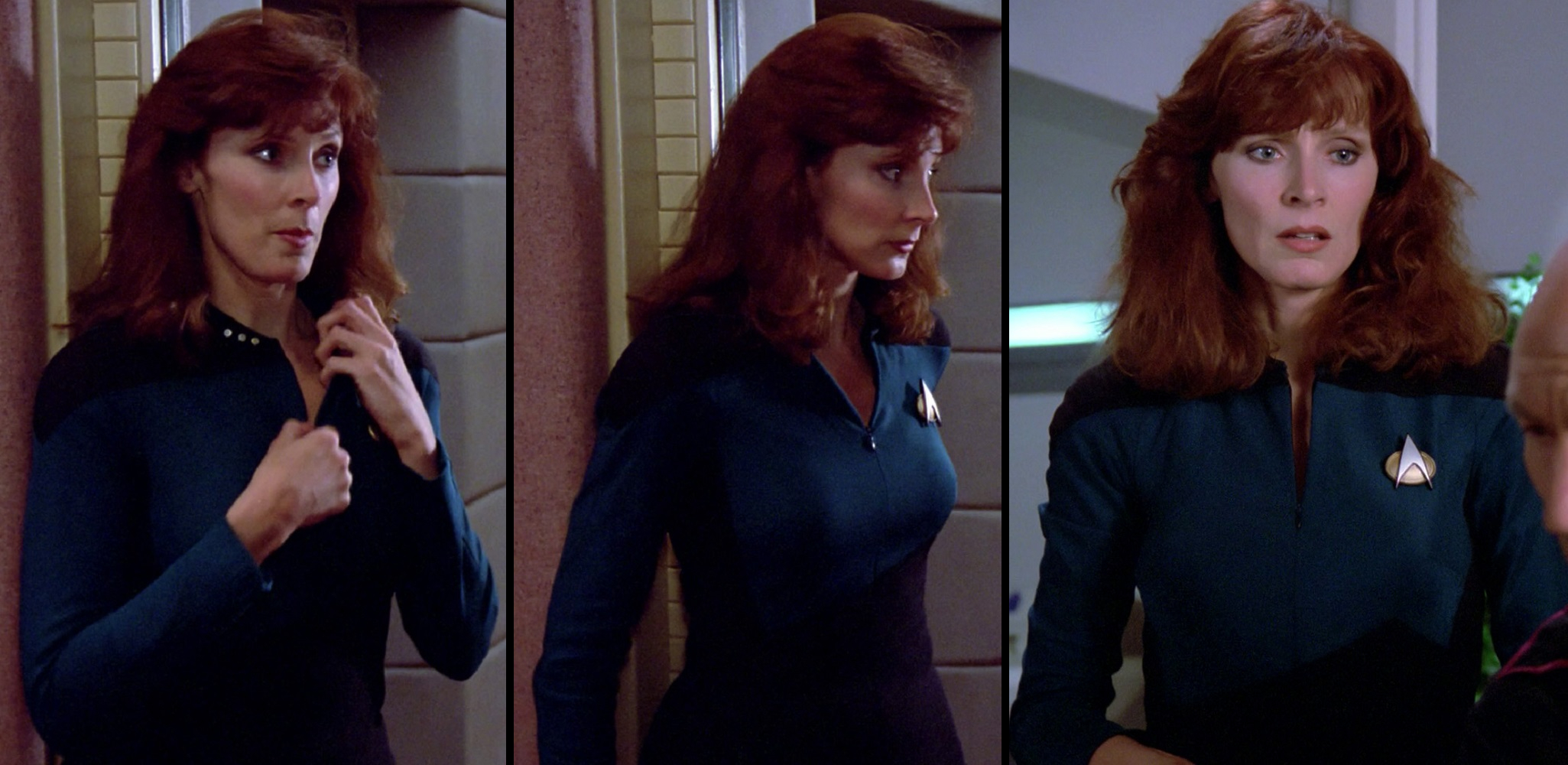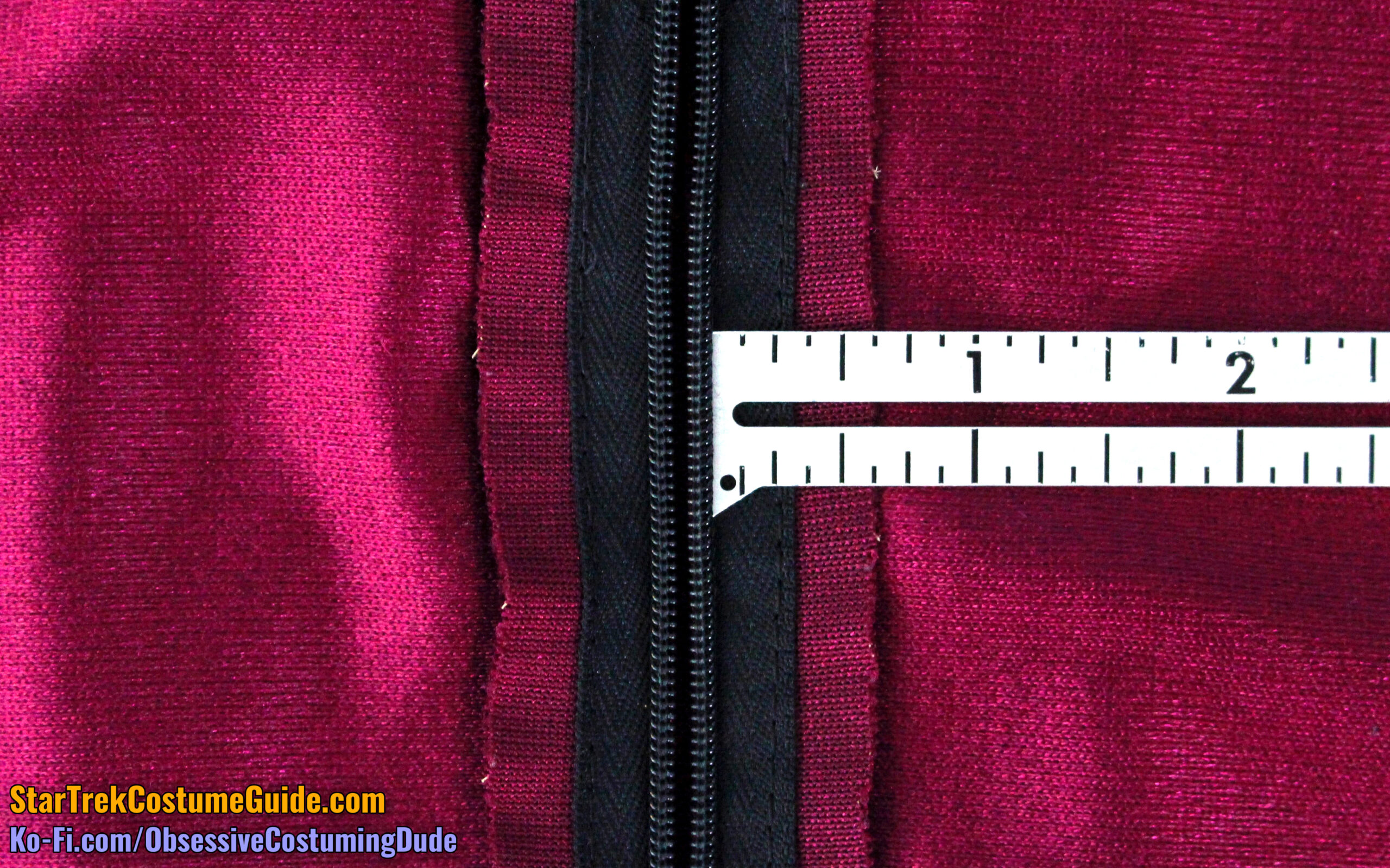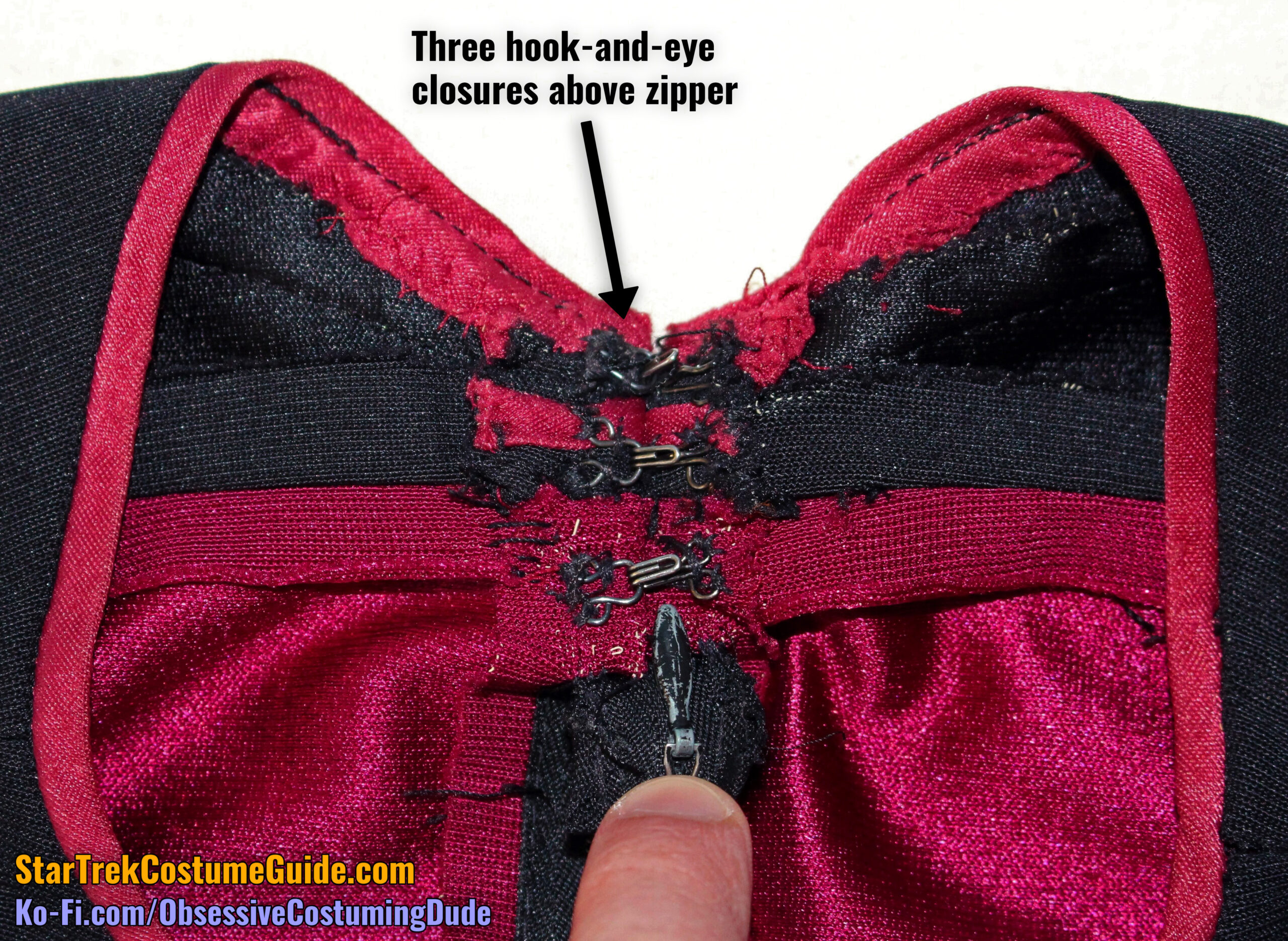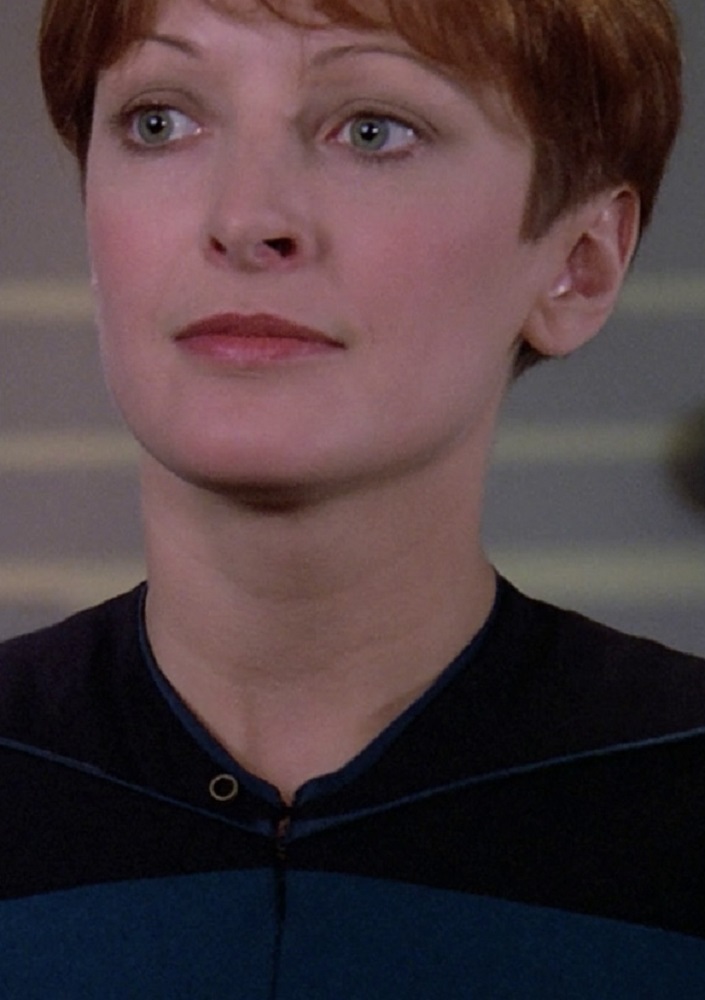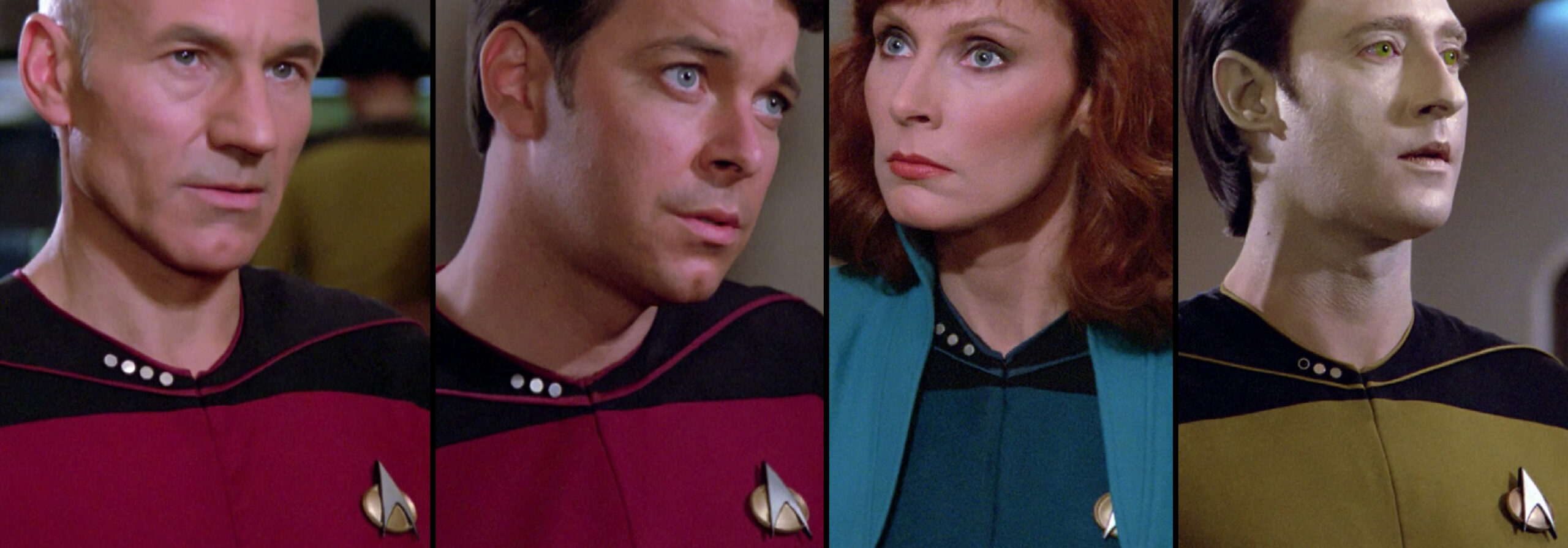Jumpsuits Unzipped
With one exception, the jumpsuits were always fastened closed in the show – the sole exception being when space-drunk Beverly made a pass at Captain Picard. (“Of course, we haven’t time for that sort of thing …”)
Between takes, though, the actors would sometimes unzip their uniform jumpsuits a bit.
Zipper Seam Allowances
The center front/zipper seam allowances tended to be wider than those on the rest of the jumpsuit.
On the screen-used Worf TNG jumpsuit I examined, the front allowances were about ⅝”.
On the screen-used Dr. Crusher jumpsuit I examined they were about ¾”.
On the screen-used Tasha Yar jumpsuit I examined they were closer to ⅞”.
And on the Worf jumpsuit, these front allowances were actually tacked open by hand at the waist.
Hook-and-Eye Closures
The top of the zipper was actually left hanging free, as to fully conceal the pull tab; the area above the zipper was fastened closed via hook-and-eye closures.
At the upper front, the yoke allowances were simply turned under and tacked down on the underside.
Curiously, on the Tasha Yar and Dr. Crusher uniforms I studied, there were two hook-and-eye closures above the zipper, but on the Worf uniform there were three.
Ideally these hook-and-eye closures tightly fastened the upper front area, but they can pull apart a little; thanks to the incredible quality of the show in remastered HD, the closures were actually visible sometimes.
Gradual Improvements
In theory, this system is brilliant and should produce a completely hidden closure.
However, it does seem to have taken the costume department a few episodes to refine the process; many of the closures on the initial uniforms were somewhat … unsightly (at least by later standards).
The costumers began improving the process almost immediately; the unfortunate gaps at the top were tightened considerably … but not completely (yet).
While a major improvement, many of these uniforms still had a slight sliver of black at the upper front.
Another round of touch-ups had this upper front gap tightened even more, although this sometimes resulted in a slight “divot” where the closure tension was transitioned from the zipper to the hooks-and-eyes.
After a few episodes of practice and revision, the costume department had improved the process as to typically produce closures that were entirely hidden, literally appearing “seamless.”


